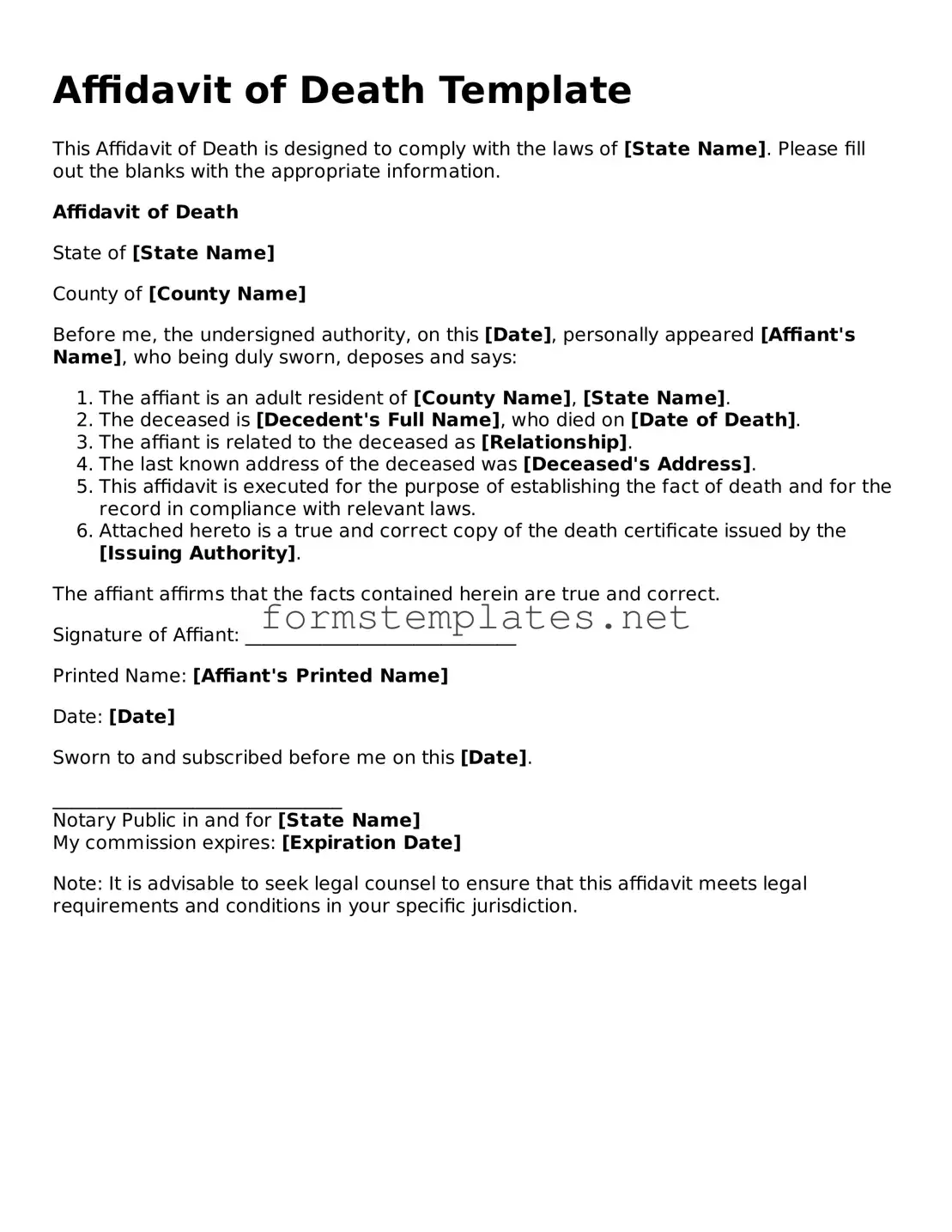What is an Affidavit of Death?
An Affidavit of Death is a legal document that serves as proof of an individual's death. It is often used in various legal contexts, such as settling estates or transferring property. This document typically includes essential information about the deceased, such as their full name, date of death, and sometimes details about their last known residence.
Who can file an Affidavit of Death?
Generally, any person who has a legitimate interest in the deceased's affairs can file an Affidavit of Death. This often includes family members, executors of the estate, or beneficiaries. It is crucial that the person filing the affidavit has accurate information regarding the death and can provide any necessary documentation to support their claims.
The Affidavit of Death usually requires the following information:
-
The full name of the deceased
-
The date of death
-
The place of death
-
The relationship of the affiant (the person filing the affidavit) to the deceased
-
Any relevant details about the deceased's estate or property
In some cases, additional documentation, such as a death certificate, may also be required.
How is an Affidavit of Death executed?
To execute an Affidavit of Death, the affiant must sign the document in the presence of a notary public. This notarization helps verify the identity of the affiant and ensures that the affidavit is legally binding. After signing, the affidavit can be filed with the appropriate court or agency, depending on its intended use.
Where do I file an Affidavit of Death?
The filing location for an Affidavit of Death can vary based on its purpose. If the affidavit is related to settling an estate, it may need to be filed in probate court. For property transfers, it might be filed with the county recorder's office. Always check local laws and regulations to determine the correct filing procedure.
Is an Affidavit of Death the same as a death certificate?
No, an Affidavit of Death and a death certificate are not the same. A death certificate is an official document issued by a government authority that confirms the death of an individual. In contrast, an Affidavit of Death is a sworn statement made by an individual, asserting that a person has died. While both documents serve to confirm a death, they have different legal implications and uses.
What are the consequences of filing a false Affidavit of Death?
Filing a false Affidavit of Death can have serious legal consequences. This act may be considered perjury, which is a criminal offense. Penalties for perjury can include fines and imprisonment. Additionally, any legal actions taken based on a false affidavit may be invalidated, leading to further complications for the affiant and any parties involved.
